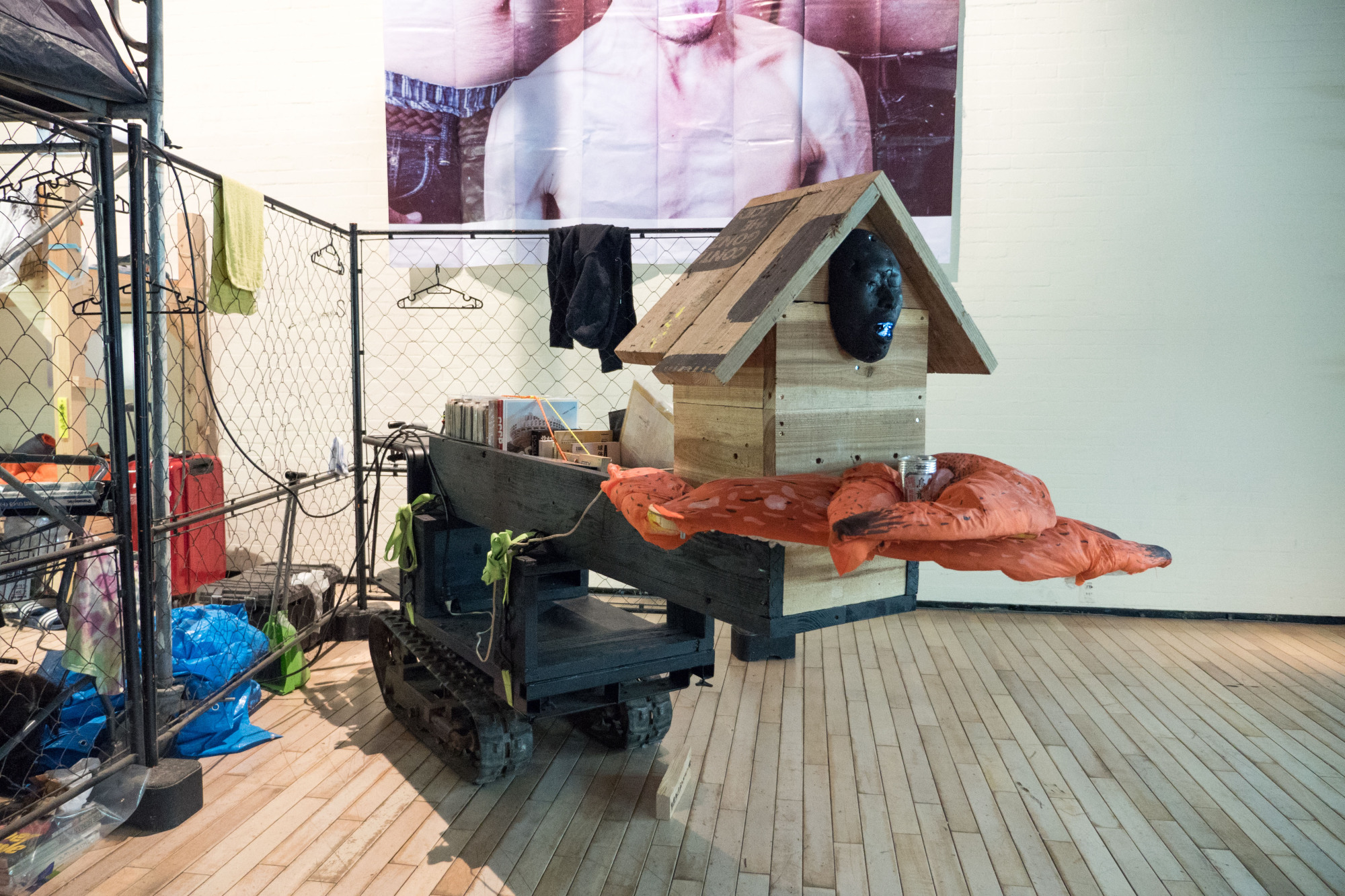Being only a part-time art historian, but full-time gossip, I spend more time commiserating with my single female friends on the problem of "Why are there no great men?" than I ponder the rhetorical "Why have there been no great women artists?", as feminist art historian Linda Nochlin asked in 1971 (hint: who writes the art history?).
Women trying to find a decent man is an eternal problem, but I think it might be a particularly acute one in Japan right now, where we seem to be in the midst of John B. Calhoun's (1917-95) Universe 25. In the course of his studies on overpopulation Calhoun created a living environment for mice that provided unlimited food and water, but was limited in space. A group of mice developed that Calhoun dubbed "the beautiful ones," as they lost interest in socializing and reproduction, and spent their days grooming themselves.
The "Physicatopia" exhibition at the Watari Museum of Contemporary Art by art performance collective contact Gonzo definitely has an air of unravelling masculinity about it. Sometimes funny, sometimes pathetic and occasionally disconcerting, the group, named after their fondness for writer Hunter S. Thompson and their performance style of half brawling and half dancing, camped out for a week in the gallery, leaving their bunkbeds and work table behind like an ultimate version of teenage boys refusing to tidy up their room. The fenced-off living area looks like a cross between a prison cell and a terrarium.



















With your current subscription plan you can comment on stories. However, before writing your first comment, please create a display name in the Profile section of your subscriber account page.